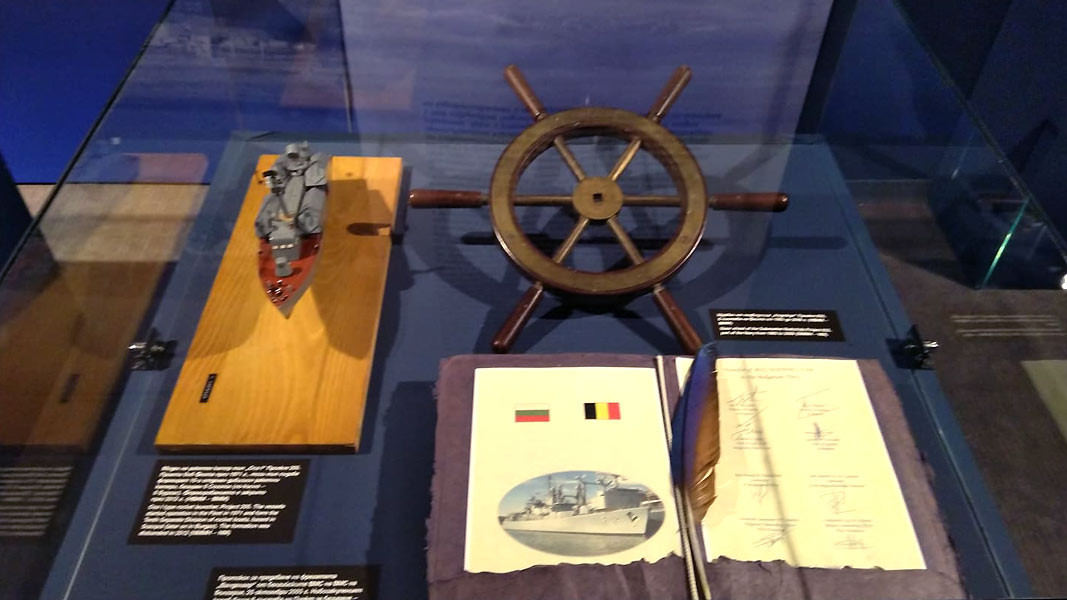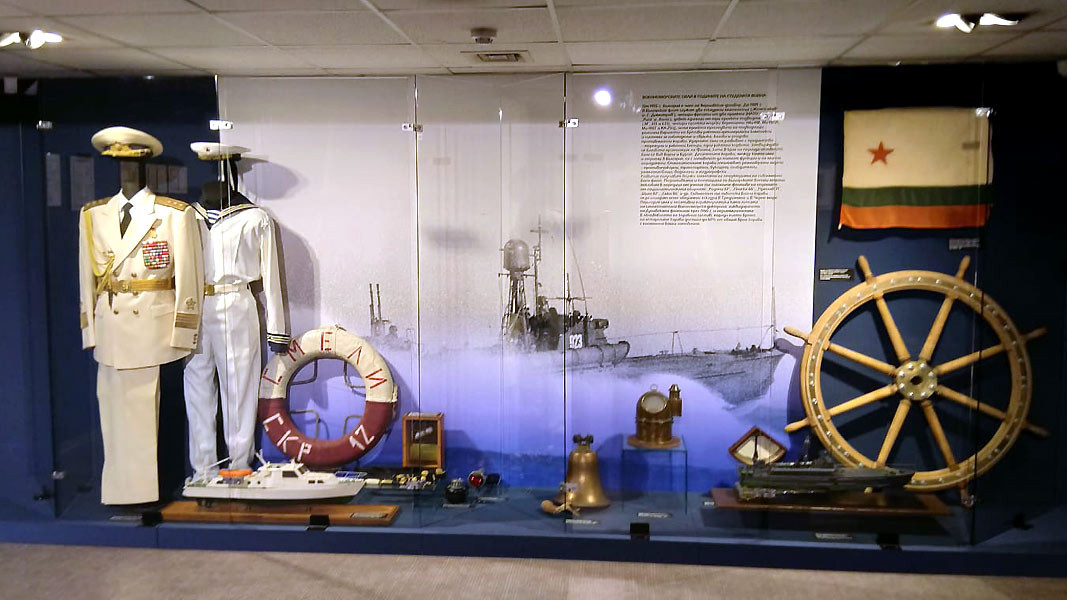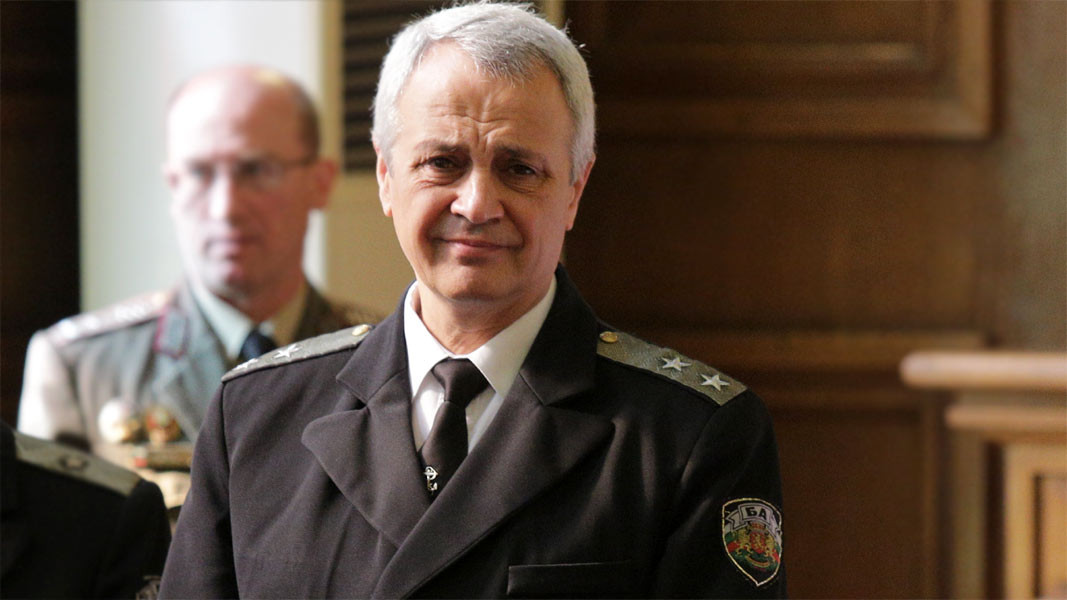On May 6 – Bravery Day and Day of the Bulgarian Army the National Museum of Military History traditionally welcomes visitors free of charge. The guests of the museum will have the opportunity to enter the cockpit of MI-8 transport helicopter and the units which operate the tactical ballistic missile complex 2K 52 Frog Luna-M and the mobile radio altimeter PRV 11 Vershina. The fans of Bulgarian history will have the opportunity to see free of charge the latest exhibition at the National Museum of Military History named Onboard the Fleet’s History dedicated to the 140th anniversary of the establishment of the Bulgarian Naval Forces.

The exhibition presents little known valuable items, documents and paintings of the National Museum of Military History’s funds and its department in Varna – the Maritime Museum including items of the Alexander I yacht built especially for the Danube Fleet and the Black Sea units, distinctions of Gustav Karlsson – the first professional diver in the Danube Fleet, as well as items belonging to Druzki torpedo boat which secured the first Bulgarian marine victory by sinking the Turkish cruiser Hamidiye during the First Balkan War of 1912.

 The history of the exhibition starts from the Danube city of Ruse with the first vessels left by the Russian Empire after the liberation from the Ottoman Rule, the Director of the National Museum of Military History Associate professor Dr. Sonya Penkova told Radio Bulgaria. The enlargement of the Bulgarian fleet at the end of the 19th century with the Marine unit in Varna is a serious step towards the transformation of Bulgaria into a maritime state:
The history of the exhibition starts from the Danube city of Ruse with the first vessels left by the Russian Empire after the liberation from the Ottoman Rule, the Director of the National Museum of Military History Associate professor Dr. Sonya Penkova told Radio Bulgaria. The enlargement of the Bulgarian fleet at the end of the 19th century with the Marine unit in Varna is a serious step towards the transformation of Bulgaria into a maritime state:
The Bulgarian fleet managed to protect the country’s coasts together with the shore artillery during the wars for national liberation and unification. Thanks to the Bulgarian fleet the Bulgarian ports were protected from destruction and the number of victims during the bombings of the Turkish and the Russian squadrons was brought to minimum.
The remnants of the enemy Russian ship Lieutenant Pushchin, which was destroyed by a Bulgarian naval mine in 1916, as well as the water bomb and a ship siren found in 2010 in Varna Bay are evidence of the military actions along the Bulgarian shore during the First World War.

The flag of Mesta minesweeper, which was part of the Mediterranean Fleet, and a photo camera from Arado 196-A hydroplane date back to the Second World War. Different uniforms used since the Cold War period until present, displayed at the exhibition, as well as the steering wheel of the forebridge of the Hope submarine trace the history of the naval staff and the development of the Bulgarian Naval Forces after 1989.

 Today the Bulgarian Navy plays a very important role, the Chief of the Bulgarian Naval Forces Rear Admiral Mitko Petev told Radio Bulgaria and added:
Today the Bulgarian Navy plays a very important role, the Chief of the Bulgarian Naval Forces Rear Admiral Mitko Petev told Radio Bulgaria and added:
On one hand the Bulgarian Navy is part of this country’s defense system and ensures the maritime sovereignty and the use of maritime spaces which are one third of our land territory. On the other hand, the naval forces have direct economic impact on the well-being of the people, because they ensure free movement of goods and people by sea. Meanwhile, we have developed a functioning system which ensures safety of commercial navigation and protects human lives at sea. The Bulgarian naval fleet is the institution which ensures the fulfillment of this county’s international obligations.
In Mitko Petev’s words, the Bulgarian naval forces have always been together with its people in times of war and peace. Officers from the Bulgarian fleet and graduates of the naval academy occupy key positions in science and education fields, as well as in Bulgaria’s government and international institutions. That is why many young people are interested in making careers within the structures of the Bulgarian naval fleet:
What is more, currently we have modern naval aviation and means of surveillance of sea spaces. We are to acquire new ships, too. It guarantees good career development to the young staff which associates its future with the Bulgarian fleet.
English version: Kostadin Atanasov
Photos: Darina Grigorova, BGNES and militarymuseum.bgFor the first time, two of the most mysterious archaeological sites in the Eastern Rhodopes have been studied in detail from air. Bulgarian archaeologists scanned the Harman Kaya rock complex near the village of Bivolyane and the ancient Asara fortress..
After the Liberation in 1878, Bulgaria began to develop at a pace that would make up for the centuries-long absence from the world history map. Young Bulgarians graduated from prestigious European universities and took their knowledge to their homeland..
One of the three biggest Hebrew holidays, Pesach (Passover) starts at sundown (5 PM) on 22 April and ends on 30 April. It is a movable feast, falling after the 14 th day of the spring month of Nisan which starts after the spring equinox with the..
After the Liberation in 1878, Bulgaria began to develop at a pace that would make up for the centuries-long absence from the world history map. Young..
For the first time, two of the most mysterious archaeological sites in the Eastern Rhodopes have been studied in detail from air. Bulgarian archaeologists..

+359 2 9336 661
